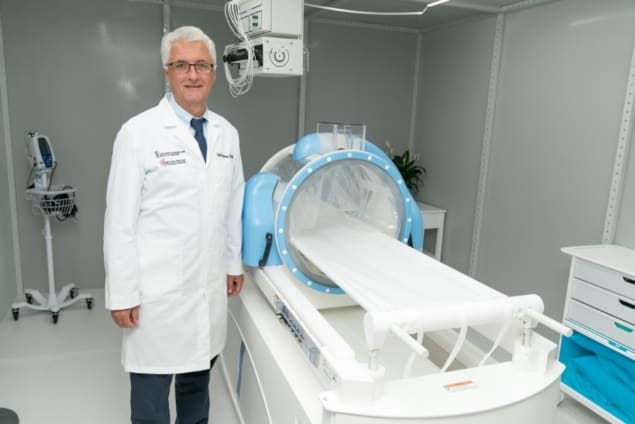
The Maryland Proton Treatment Center (MPTC) is now offering deep-tissue external thermal therapy in combination with proton therapy, in an attempt to boost survival chances for patients with abdominal and pelvic cancers. MPTC is the only centre in the world to offer these two treatments at the same facility.
External thermal therapy — heating in the range of 40 to 43.3 °C — sensitizes tumour cells to chemotherapy and radiation treatment. Studies have found that adding hyperthermia to these treatments can significantly shrink tumours and improve survival for some patients. Heat has also been shown to enhance anti-tumour immune response.
“We are very pleased to be able to offer deep-tissue thermal therapy, which can be combined with standard radiation therapy as well as proton-beam therapy to enhance the cancer-killing effects of the radiation,” says Zeljko Vujaskovic, a professor of radiation oncology at the University of Maryland School of Medicine.
Radiation oncologists at UMGCCC, the University of Maryland’s cancer centre, already use external thermal therapy to treat a range of cancers, but don’t currently use it for cancers deep in the body. Now, new deep-tissue thermal therapy equipment will be employed to treat tumours including cancers of the bladder, rectum, cervix, ovaries, pancreas and connective tissue.
Patients will typically receive the thermal therapy twice a week for an hour, before or after receiving (photon-based) radiotherapy or proton therapy. The system heats the tumour tissue to 42 °C, with internal and external probes enabling continuous temperature monitoring. A water-filled applicator is placed over the area to be treated, and non-invasive radio frequency energy is directed at the tumour. The heat causes tumour blood vessels to dilate, bringing more oxygen into the tumour, and making cancer cells more vulnerable to radiation therapy.
“Early research suggests that adding thermal therapy to proton-beam therapy may be associated with an even greater benefit than when combined with standard radiation therapy, and we are excited to be at the forefront of making this combination therapy available to cancer patients,” says Vujaskovic.



